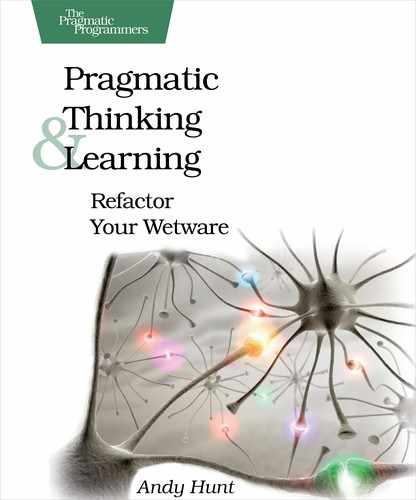Chapter
5
Debug Your Mind
I never set out to be weird. It was always the other people who called me weird.
Intuition is great, except when it’s not.
It’s a popular vision that leaders are diligent, thoughtful decision makers. They gather all the relevant facts, weigh them, and come up with the logical, rational decision. But in fact, that idealized process is basically never followed, even by expert, high-pressure decision makers.[75]
We are not rational creatures.
Instead, we make decisions and solve problems based on faulty memory and our emotional state at the time, ignoring crucial facts and fixating on irrelevant details because of where and when they occur or whether they are brightly colored. Especially if they are brightly colored.
We need to debug the system.
The modern idea of “debugging” a computer comes from a real bug—a moth trapped in a relay of the Mark II Aiken Relay Calculator (see Figure 13, The first bug in the system (Sept. 9, 1945)). While running a series of cosine regression tests, the operators spotted an error. Looking into the matter, they found the moth. The operators removed the bug, dutifully taped it to the log book, and so truly debugged the system.[76]

Figure 13. The first bug in the system (Sept. 9, 1945)
Although that’s a fine metaphor (and occasionally literal truth) in hardware systems, the idea of debugging your mind is, well, kind of gross. But we really do have “bugs” in the way we think—fundamental errors in how we process information, make decisions, and evaluate situations. James Noble and Charles Weir sum up the problem nicely:
“Development is always done by people; clients and users are people; and under strict genetic testing most managers can be shown to share at least 50% of their genetic code with homo montipythonus.”[77]
Unfortunately, the human mind is not open source. None of us has ready access to the source code to fix these bugs, but I can help show you where they occur so that you can be more aware of the influence of these erroneous processes on your thinking. We’ll look at four broad categories of problems:
-
Cognitive biases: How your thinking can be led astray
-
Generational affinity: How your peers influence you
-
Personality tendencies: How your personality influences your thoughts
-
Hardware bugs: How older portions of your brain can override the smarter portions
Being aware of these bugs is the first step to mitigating them.
